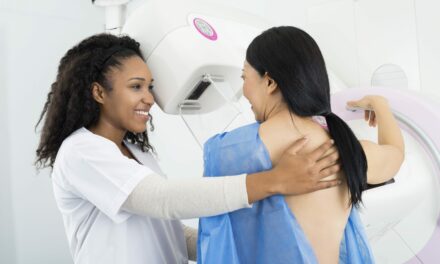 Mammography is undergoing a lot of transition today. Film-screen mammography maintains its status as the industry standard (albeit taking some flack from naysayers who don’t like its track record), while digital mammography undergoes trials and clinical testing to determine if it is superior in any way to analog. While clinicians and scientists debate the merits and positions of each, both are being utilized every day in medical facilities worldwide, producing good results for patients.
Mammography is undergoing a lot of transition today. Film-screen mammography maintains its status as the industry standard (albeit taking some flack from naysayers who don’t like its track record), while digital mammography undergoes trials and clinical testing to determine if it is superior in any way to analog. While clinicians and scientists debate the merits and positions of each, both are being utilized every day in medical facilities worldwide, producing good results for patients.
“Analog film mammography continues as the system of choice for conducting mammograms today,” says Pat Montgomery, U.S. mammography products manager at Agfa, Inc., Greenville, S.C. “The main players in this market are concentrating on preserving their market share and improving image quality and consistency. Digital mammography is expected to be the technology of the future as more manufacturers develop and receive FDA approval for their systems.”
Film-screen mammography continues to gain the largest market share, and is a reliable, time-tested method of screening for breast cancer. It has not become stagnant, though; improvements continue to be made. With each round of mammography, about 4 to 10 percent of women are found to have some sort of abnormal result, according to an article in The New York Times (Feb. 14, 2002). An estimated 28 million women have mammograms each year, proving that analog mammography is a valuable detection tool.
“Film-screen mammography has been widely studied and is the only proven technology for reducing mortality in breast cancer screening,” explains Margo Robinson, general manager, mammography and oncology and VP, Health Imaging, Kodak, Rochester, N.Y. “Analog mammography is in widespread use around the world, and it is the most accessible and available technology for breast imaging. It also offers the highest image resolution.” Analog mammography is “alive and well,” according to Bill Cioffi, national marketing manager, Women’s Healthcare Imaging Systems, for Fujifilm Medical Systems (Stamford, Conn.). He estimates that 15,000 analog units dominate the market today, with approximately 150 digital units already sold as well.
Please refer to the May 2002 issue for the complete story. For information on article reprints, contact Martin St. Denis



